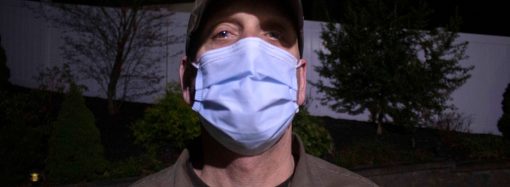By Scott Terwilliger
I was a social media intern at Newsday from May to July. Before this, I had never interned at an established news organization. In these ten weeks, I learned the importance of organization and about the balance between quantity and quality of content.
My first day in the newsroom was the most eye-opening. There were papers bustling, printers running and people shouting across the room. It was thrilling for me as a student journalist to see this chaotic energy, but unnerving too. At school, I submit my work to my professor and expect to hear back within a few days or weeks. At Newsday, I’d hear back within a few minutes.
Being chained to these deadlines motivated me to produce more content and let go of the idea of perfection. As I’d been taught in multiple staff meetings, Newsday is a daily news organization. Although it could be beneficial to have a few extra days or weeks to work on a project, consumers can easily take their money elsewhere. This balance is crucial for School of Journalism students to keep in mind as they craft stories or produce videos. A strong framework should come first, followed by fine-tuning if there is time.
During the internship, I created packages for social media. My boss would send me an article, and I would have to condense it to fewer than 10 slides, each with only one or two sentences. These assignments taught me how to write concisely for an audience. The scope of the articles ranged from commonplace local travel guides of Montauk to urgent global political stories, like the travel ban. Sometimes, these articles contained too much information, and I had to sift through the text to find the essentials.
Being a SOJ student prepared me for meeting the various needs of the social media staff. There were strict guidelines for the production of each video, such as the dimensions and location of text. Patience was key to the internship, as sometimes I would have four or five different department heads looking over and making edits to my video.
Occasionally, the opinions would contradict each other, leaving me to find a compromise. For example, I made a promotional video for Newsday’s annual event, “Day in the Life of Long Island.” There were many department heads reviewing the video, including the vice president of the company. I was given conflicting feedback about whether there should be a picture collage at the beginning or at the end. Ultimately, I used the collage to introduce and end the video.
Looking back, I wish I had known how to be more organized from the start. As an intern, I didn’t have a permanent computer, which meant that all my project files were stored on an external hard drive. I wasn’t sure how to organize the footage properly so that other people could access the project on my days off, which lead to frustration. The footage within the project would be “offline,” meaning that the file path that was originally used didn’t exist anymore. In the last few weeks of my internship, my co-worker taught me how to organize my files so they would work properly.
Any SOJ student considering this internship in the future should be prepared to work independently. The video editors at Newsday are helpful and are always willing to give you pointers in Adobe Premiere Pro. For more advanced edits, however, there may not be as much support as you need. In addition, future interns should be able to read and video edit quickly. These packages can have deadlines as short as two hours, which includes writing text, sending it to your boss and a copy editor, as well as editing it together and rendering times.
